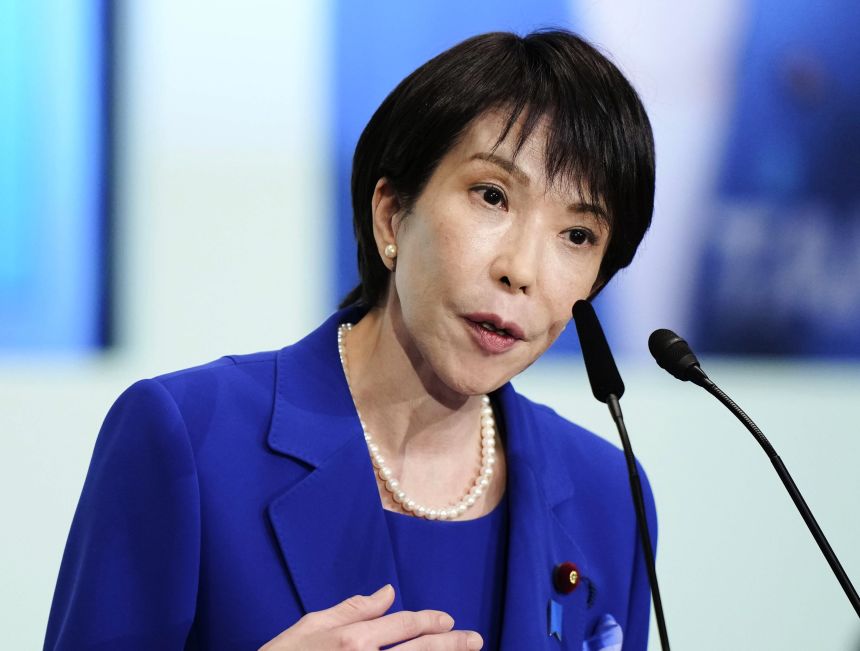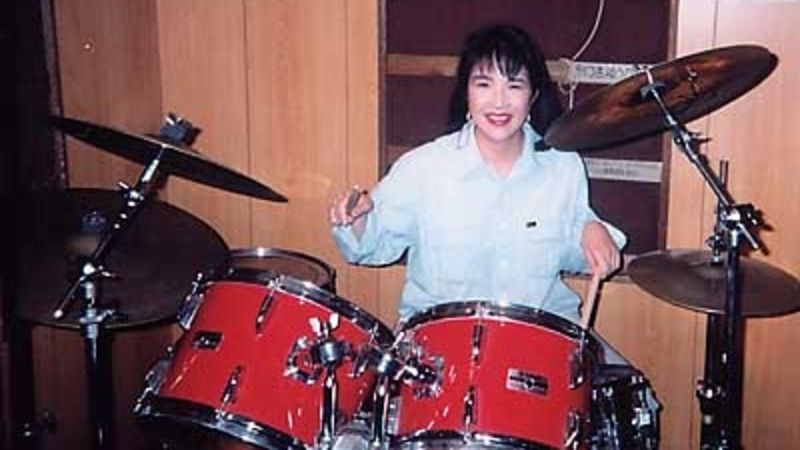Tokyo
—
For most of her life, Sanae Takaichi has loved heavy metal.
Since drumming in a college band, the 64-year-old politician has remained a fan of groups like Black Sabbath and Iron Maiden. She used to play so hard that she carried four pairs of sticks as back-up in case they snapped, Japanese media has reported.
But unlike most metalheads who mellow with age, the woman likely to be Japan’s next prime minister is still an enthusiast. She has an electric drum set at home and bangs out songs whenever she’s stressed, usually about her husband.
“I play after he goes to sleep,” she joked during a recent interview with a Japanese YouTuber.
That same headbanging energy has defined her steady, albeit unconventional, political rise.
The staunch conservative and longtime lawmaker won Japan’s ruling party’s presidency on October 4, becoming the first woman ever to secure the post, after her third attempt. But with her coalition prospects in doubt, and the party weakened by scandal and voter frustration, her route to Japan’s top job is far from assured.
Days after winning the Liberal Democratic Party (LDP) leadership, a victory that would normally all but guarantee the premiership, Takaichi was dealt an unexpected setback. The LDP’s longtime coalition partner, Komeito, announced it would not join a government under her, citing lingering mistrust over an LDP political slush fund scandal. The split leaves Takaichi scrambling to secure enough parliamentary support to form a stable administration.
And even if she does become Japan’s first woman prime minister, she will inherit a daunting list of challenges.
Takaichi has long championed conservative policies, rooted in nationalist and traditionalist ideals. Her win, a surprising triumph in Japan’s deeply patriarchal political system, signals to disillusioned LDP voters that traditional conservatism is alive and well.
A prominent member of the ultranationalist lobby group Nippon Kaigi, she promotes a patriotic education. She’s also supported revising Japan’s pacifist constitution, particularly Article 9, which renounces war and bans military forces.
Unlike many of her male peers, Takaichi doesn’t come from a political dynasty. She was born in Nara prefecture to a father who worked for a car company and a mother who was a police officer.
Before entering politics, she interned for a US Democratic congresswoman and worked as a TV commentator, “wearing miniskirts, riding motorcycles and presenting herself in a lively, unconventional way that sharply contrasted with the typical older male commentators,” Hajime Kidera, a professor at Meiji University’s School of Political Science and Economics, told CNN.

But Takaichi gave up her beloved Kawasaki Z400GP motorcycle after becoming a lawmaker in 1993 at age 32, reportedly to avoid accidents that could hinder her work.
Her first stint in politics was as an independent lawmaker in Japan’s parliament. Around that time, she met the hairdresser who’d style her hair for the next three decades. From the start, Yukitoshi Arai told CNN, Takaichi aspired to be like Margaret Thatcher.
When Arai learned Takaichi had won the LDP leadership, he said, “I was so happy it gave me goosebumps.”
He fondly recalled how, after early political struggles, Takaichi joined the LDP in 1996. “We decided to express her renewed determination with her hair and cut it short,” he said. Thus was born the iconic “Sanae cut” – sleek, sharp and practical for a busy politician.
Since joining the LDP, Takaichi has been re-elected nine times. She’s held multiple cabinet posts, including on gender equality and demographic issues, and chaired the party’s Policy Research Council. Most recently, she served as minister of economic security under the administration of Fumio Kishida.
Takaichi married in 2004. In a recent interview, she said she agreed to marry her husband, a fellow LDP lawmaker, without ever going on a date.
He proposed over the phone, saying he’d had his eyes on her “for some time.” His audacity and her rashness might surprise some. But her husband was a catch, she said – he’s a trained chef.
“He told me, ‘You’ll never go a day without eating good food.’ So, I just took the plunge,” she laughed, admitting she’s not much of a cook herself.
Japan’s economic and demographic woes pose immediate challenges for Takaichi, should she become Japan’s next prime minister.
The country’s declining birthrate means a shrinking workforce saddled with supporting a swelling elderly population. Record high inflation and a weak yen are also squeezing households and driving up living costs.
Soon after her election, the yen hit a new low amid expectations of major fiscal stimulus. Takaichi has floated large-scale spending and low inflation under her own banner, “Sanaenomics,” echoing her mentor Shinzo Abe’s “Abenomics.”
“That kind of talk can weaken the yen further and raise concerns about Japan’s debt levels. For ordinary people already struggling with rising prices, it’s also a serious worry,” Kidera, the politics professor from Meiji University, said.
Trade relations with Washington could prove tricky, particularly over a $550 billion Japan-to-US investment deal announced in September, which Takaichi has previously said she could revisit.
As it stands, Japan’s investment in the US targets sectors like semiconductors, energy, pharmaceuticals and shipbuilding, while also purchasing $8 billion annually in US agricultural products. In return, the US has reduced tariffs on Japanese goods, including cars, to a baseline of 15%.
With few details about the $550 billion investment deal available, and given President Donald Trump’s mercurial nature, Takaichi appears to be waiting to see how it unfolds, said Rintaro Nishimura, a Tokyo-based senior associate at The Asia Group, a consulting firm.
Her first test with Washington could come quickly. If Takaichi can form a coalition and Trump’s schedule allows time around the ASEAN summit, they could meet at the end of October – potentially just days into her premiership.
But despite her short runway, comparisons between the two conservative leaders are already being drawn. As a protégé of Abe, who enjoyed a close rapport with Trump, Takaichi is expected to follow her mentor’s diplomatic playbook. Like Abe, Takaichi has called for sharp increases in Japan’s defense budget, a move likely to be welcomed by the Trump administration, which has urged Tokyo to approach NATO’s 5% benchmark.

Geopolitics will further test her leadership. Known as a China hawk, Takaichi has previously suggested that Chinese residents in Japan have a “duty to aid Chinese espionage.” She’s also argued that Japanese war crimes have been exaggerated, and makes regular visits to the controversial Yasukuni Shrine, where Japan’s war dead, including convicted war criminals, are enshrined. Several of her cabinet picks have close ties to Taiwan, risking friction with Beijing, Japan’s top trading partner.
Yet analysts expect her stance on visits to the Yasukuni shrine will soften in office. “In reality, Takaichi will likely follow a logic of practical diplomacy. She’ll have to tone down the anti-China rhetoric she’s shown in the past,” political analyst Nishimura told CNN.
Signs of moderation have already appeared. Takaichi said she won’t visit Yasukuni during its autumn festival, likely to reassure uneasy coalition partners.
Her election may also blunt the rise of Sanseito, a right-wing populist party that surged in July on an anti-immigration platform. During the LDP leadership race, all five candidates promised tougher measures on foreigners. But Takaichi stood out for her rhetoric, vowing to crack down on rule-breaking visitors and immigrants.
She also cited unconfirmed anecdotes about tourists allegedly kicking sacred deer in her hometown of Nara, remarks that drew criticism. She later clarified she aimed to highlight the growing anxiety and anger among many Japanese about “outrageous” foreigners.
At home, Takaichi must rebuild public trust after years of scandal within her party. In 2022, revelations of some LDP lawmakers’ ties to the former Unification Church hurt the party’s reputation. The following year, several lawmakers were accused of failing to report income or disclose kickbacks, deepening public frustration.
Critics say Takaichi’s record on women’s rights is mixed and will be another test of her public appeal. She opposes allowing married women to keep separate surnames, and resists female succession in the imperial family. Still, during her 2025 campaign, she proposed tax breaks for babysitting and corporate incentives for in-house childcare, perhaps signs of a cautious shift toward more women-friendly policies.
Takaichi’s rise delivers a jolt to Japan’s political landscape. Poised, but far from assured, to become the country’s first woman prime minister, she’s also steering the LDP back toward its conservative roots after years of centrist leadership.
The question now is whether Takaichi’s election, and the LDP’s gamble on her, will revive the party’s fortunes or hasten its decline.
First Appeared on
Source link




